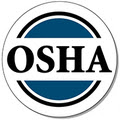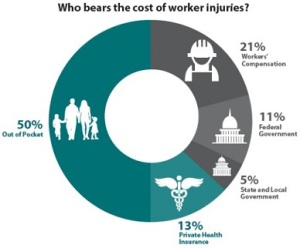 Safety is one of the primary pillars of a productive and profitable material handling operation. Unfortunately, most small to mid-size companies to not have the resources for a safety and compliance manager, much less a safety department. OSHA has tools available to these companies, like yours, to help you not only gain compliance, but how to look at your operation with a “safety eye” and help you identify potential hazards before they become health, safety or legal issues.
Safety is one of the primary pillars of a productive and profitable material handling operation. Unfortunately, most small to mid-size companies to not have the resources for a safety and compliance manager, much less a safety department. OSHA has tools available to these companies, like yours, to help you not only gain compliance, but how to look at your operation with a “safety eye” and help you identify potential hazards before they become health, safety or legal issues.
OSHA’s Compliance Assistance QuickStart will help you identify the guidelines that apply to your operation, teach you how to survey your operation for potential hazards and violations, and assist you in developing a safety program to ensure compliance and a healthy, safe operation based on your individual needs.
Once you have established needs, OSHA’s tools help you learn how to train your employees to perform their functions safely and be on the lookout for potential safety hazards that might pop up unannounced. Finally, they help you keep records and learn how to report hazards and incidents when they occur to ensure you are maintaining compliance.
Need assistance in getting started? OSHA has you covered. The OSHA Free Consultation program provides you with access to an OSHA consultant who will schedule an appointment with you for a walk-through of your facility. During this consultation, you will receive a pre-inspection conference, a walk-through and a post-inspection conference. Following, the OSHA consultant will provide you with a written report of findings and agreed upon time frame for agreed upon abatement periods. Findings of this consultation will only be reported to OSHA if you fail to correct any serious hazards or situations that present an imminent danger. To learn more about how we can assist you with forklift operator training and compliance, please visit our training page.
The goal is to treat every potential hazard as if someone you love, were doing the job. Getting each of your employees and visitors home safely at night is the key to having them return tomorrow, ready to work, and work productively!
Download the OSHA Consultations Fact Sheet for more information. Or to get started, visit the OSHA Consultation Directory to find consultants nearest you.


 A new report generated by OSHA highlights the real costs associated with on the job injuries, who pays them and how this impacts the employee and taxpayers.
A new report generated by OSHA highlights the real costs associated with on the job injuries, who pays them and how this impacts the employee and taxpayers.